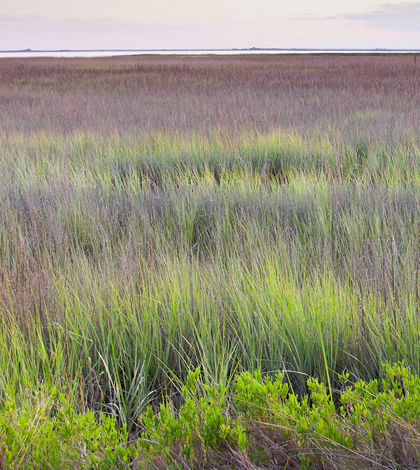Georgia Coastal Wetlands: 35 Percent Marsh Plant Biomass Drop

Spartina grass grows in the Sapelo Island saltmarsh. Research from satellite data shows a 35 percent decline in marsh biomass over the last 30 years. (Credit: Amy Ware / University of Georgia)
Between 1984 and 2011, the amount of marsh plant biomass along the Georgia coastline went down 35 percent, according to the results of a recent study led by researchers at the University of Georgia Marine Institute. The findings don’t bode well for the health of the state’s coastal wetlands going into the future.
Images from NASA’s Landsat TM 5 satellite covering nearly 28 years were used in the investigation. Scientists looked specifically at the extent of cordgrass, or Spartina alternifolora, which is the dominant type of plant in salt marshes along the United States’ East Coast.
The biomass of that plant, they found, had dropped sharply over the period. The declines appear largely due to changes in climate, with long periods of drought and increased temperatures playing a role.
The investigators worry that the loss of vegetation could have a ripple effect through the marsh-based ecosystems of Georgia’s coastal wetlands. A decrease in the growth of marsh plants likely affects all of the animals that depend on the region, such as juvenile shrimp and crabs, which use marshes as a nursery. Decreases in vegetation may also affect other marsh services, such as stabilizing the shoreline, filtering pollutants and protecting against storm damage.
Using satellite images helped the researchers to avoid the hefty undertaking of fieldwork, that could have had them them out in the muck manually surveying the marsh lands. The salty wetlands are typically muddy and difficult to navigate, meaning scientists typically must plan their studies around low tide.
Future plans for the work are to expand it into coming years with an eye toward predicting how the coastal marshes will respond to sea level rise and other long-term changes. Full results of the effort are published in the journal Remote Sensing.
Top image: Spartina grass grows in the Sapelo Island saltmarsh. Research from satellite data shows a 35 percent decline in marsh biomass over the last 30 years. (Credit: Amy Ware / University of Georgia)




0 comments